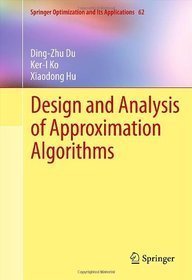

Most ebook files are in PDF format, so you can easily read them using various software such as Foxit Reader or directly on the Google Chrome browser.
Some ebook files are released by publishers in other formats such as .awz, .mobi, .epub, .fb2, etc. You may need to install specific software to read these formats on mobile/PC, such as Calibre.
Please read the tutorial at this link: https://ebookbell.com/faq
We offer FREE conversion to the popular formats you request; however, this may take some time. Therefore, right after payment, please email us, and we will try to provide the service as quickly as possible.
For some exceptional file formats or broken links (if any), please refrain from opening any disputes. Instead, email us first, and we will try to assist within a maximum of 6 hours.
EbookBell Team

5.0
58 reviewsThis book is intended to be used as a textbook for graduate students studying theoretical computer science. It can also be used as a reference book for researchers in the area of design and analysis of approximation algorithms. Design and Analysis of Approximation Algorithms is a graduate course in theoretical computer science taught widely in the universities, both in the United States and abroad. There are, however, very few textbooks available for this course. Among those available in the market, most books follow a problem-oriented format; that is, they collected many important combinatorial optimization problems and their approximation algorithms, and organized them based on the types, or applications, of problems, such as geometric-type problems, algebraic-type problems, etc. Such arrangement of materials is perhaps convenient for a researcher to look for the problems and algorithms related to his/her work, but is difficult for a student to capture the ideas underlying the various algorithms. In the new book proposed here, we follow a more structured, technique-oriented presentation. We organize approximation algorithms into different chapters, based on the design techniques for the algorithms, so that the reader can study approximation algorithms of the same nature together. It helps the reader to better understand the design and analysis techniques for approximation algorithms, and also helps the teacher to present the ideas and techniques of approximation algorithms in a more unified way.